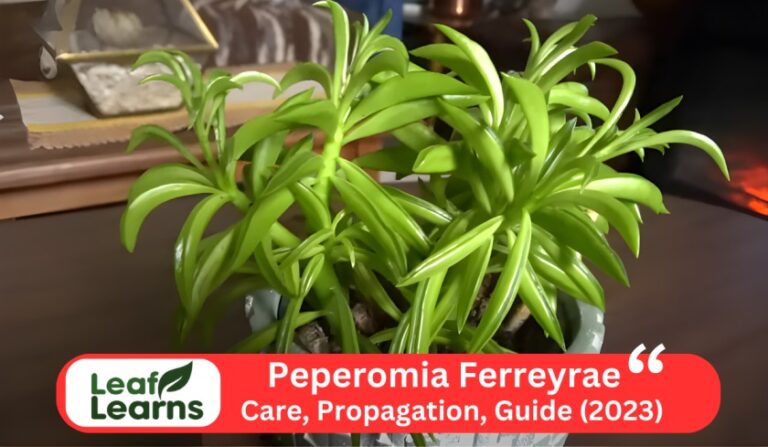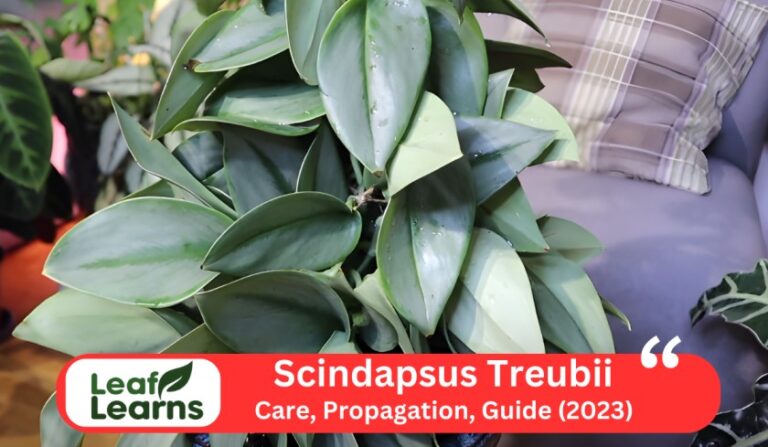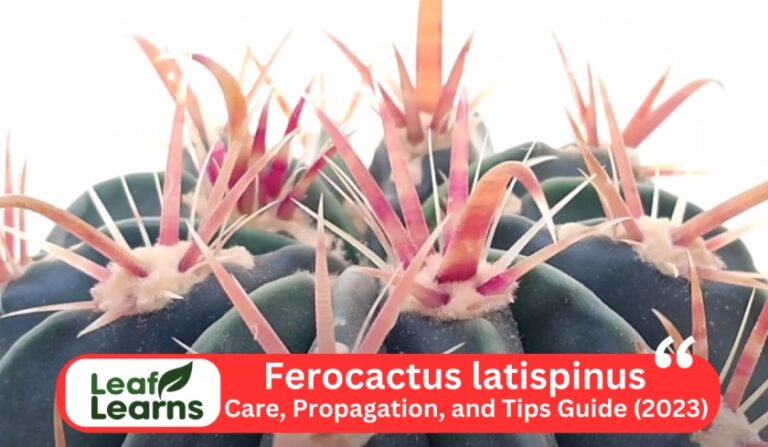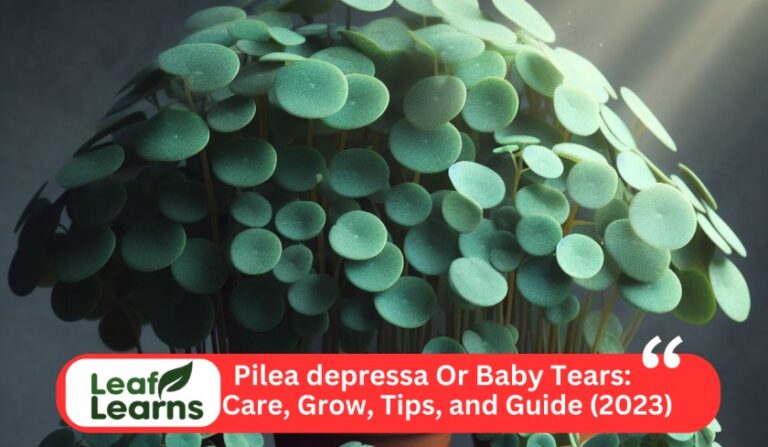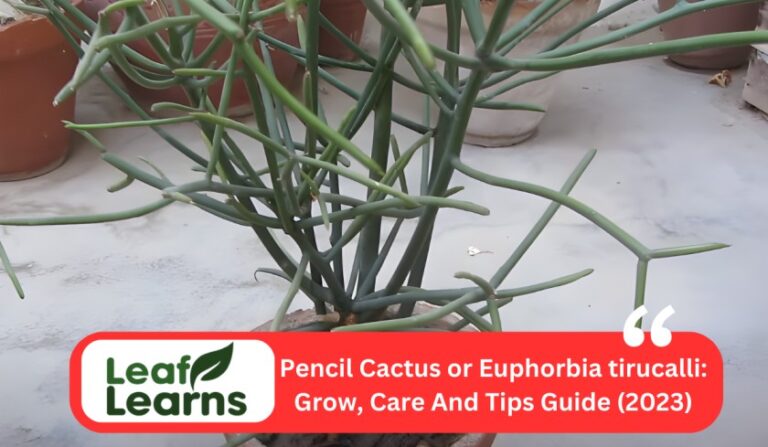Ming Fern Care and Grow guide – Leaflearns (2024)
Ming Fern, botanically known as Asparagus retrofractus, is a spectacular perennial plant admired mainly for its asparagus-like fronds. Botanically beautiful and easy to care for, this plant is a favorite among lovers of indoor greenery.

What distinguishes Ming Fern is that it has a delicate look but at the same time, it is hardy and able to thrive under different indoor conditions. Such a versatile shrub provides fresh new green colors, often blended with soft pink shades, bringing a chic natural ambiance to every interior space.
Ming Fern commonly called pom pom asparagus fern and Ming Fern scientific name is Asparagus retrofractus
| Common Name | Ming-Fern |
| Scientific Name | Asparagus retrofractus |
| Family | Asparagaceae |
| Plant Type | Perennial |
| Size | Typically grows up to 2 feet tall |
| Leaf Colour | Green, sometimes with hints of pink |
| Leaf Size | Small, needle-like fronds |
| Flower | Rarely flowers |
| Propagation | Through division or by seed |
| Uses | Ornamental indoor plant, adds greenery to spaces |
Contents
- 1 Ming Fern Care
- 2 Ming Fern Propagation
- 3 Growth Rate
- 4 Size
- 5 Ming Fern Flower
- 6 Asparagus retrofractus Foliage
- 7 Problems and Solutions
- 8 Varieties/Types
- 9 Toxicity
- 10 Ming-Ferns: Delicate Indoor Beauties with Specific Care Needs
- 11 Tree Ferns: Exotic Additions to Outdoor Landscapes
- 12 FAQs
- 12.1 What is Ming Fern used for?
- 12.2 How much sun does a Ming Fern need?
- 12.3 What is another name for a Ming Fern?
- 12.4 What does the Ming Fern symbolize?
- 12.5 What are some interesting facts about Ming Ferns?
- 12.6 How do I identify a Ming Fern?
- 12.7 What is the color of Ming Fern?
- 12.8 What is the origin of Ming Fern?
Ming Fern Care
Make sure Asparagus retrofractus has regular hydration and indirect light to maintain its health. When the top inch of soil seems dry, properly water it; however, do not overwater to prevent root rot. Avoid putting it next to heaters or drafts, and maintain moderate humidity levels. In order to encourage new growth and preserve its graceful appearance, routinely trim any yellowed or dead fronds. And in detail, You can read the Important Care for Ming-fern.
Ming Fern Propagation
The Asparagus retrofractus, despite its “fern” moniker, isn’t a true fern and happily reproduces through various methods. Here are three effective ways to propagate this graceful beauty:
Division
- Timing: Best in spring before new growth.
- Tools: Sharp knife, sterilized potting mix, new pots.
- Steps:
- Take out the Ming-Fern from its pot slowly.
- The root ball should be carefully divided into pieces, each with strong roots and shoots.
- Each division should be replanted in pots of the right size and drainage.
- Till it is established, thoroughly water and keep the moisture level constant.
Seed Propagation
- Timing: Harvest berries in summer/fall, sow seeds in spring.
- Tools: Seed tray, sterile potting mix, clear plastic wrap, warm water.
- Steps:
- After removing the pulp from the red berries, soak the seeds for 12 hours in warm water.
- Place wet potting mix on top of the seeds, then cover with plastic wrap.
- Place in bright, indirect light that is warm—not in the sun.
- To keep moisture levels up, mist often.
- Once seedlings appear, remove plastic wrap (around 3-6 weeks).
- When seedlings have many genuine leaves, transplant them into separate pots.
Water Propagation
- Timing: Year-round.
- Tools: Glass jar, filtered water, sharp knife.
- Steps:
- Choose a stem that is healthy and has two or three nodes.
- Just below a node, carefully carve a hole.
- Eliminate any lower leaves.
- Put the cutting of the stem in a jar with enough water in it to cover the bottom node.
- Every few days, change the water.
- When roots are two to three inches long, move them to a container with soil that drains well.
Growth Rate
Distinguished by its delicate “pom poms,” the Ming Fern takes its time. Anticipate modest growth; under ideal circumstances, it will normally gain 4-6 inches annually.
Because of this, it’s a fantastic option for tiny areas or for anyone looking for a plant that won’t overshadow its surroundings.
Size
Don’t underestimate the impact of a petite plant! Mature Ming Ferns stay within a manageable 12-18 inches tall and 10-16 inches wide. This compact size allows for versatile placement, thriving on tabletops, shelves, or hanging baskets.
Ming Fern Flower
The Ming Fern is valued mostly for its leaves, although it can also occasionally produce tiny white flowers. Usually tucked away among the fluffy “pom poms,” these blossoms lend a soft, endearing touch without being too theatrical.
Asparagus retrofractus Foliage
The distinctive foliage of the Asparagus retrofractus is the real show-stopper. A delicate, fluffy texture is produced by tiny, needle-like ‘pom poms’ that fall from arched stems. Any space gains depth and visual intrigue from the blend of light and dark green tones.
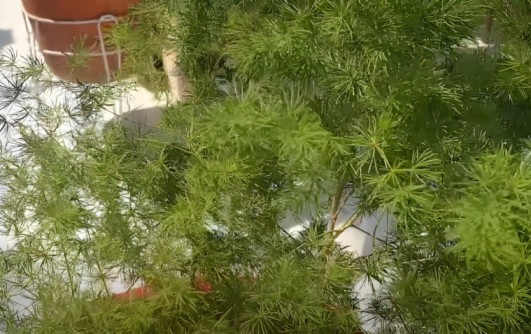
Problems and Solutions
Problem: Yellowing or Browning Fronds
Solution: To promote new development and make sure you’re getting enough water, trim off any yellow or brown fronds.
Problem: Overwatering and Root Rot
Solution: To avoid root rot, let the soil somewhat dry out in between waterings and make sure there is enough drainage.
Problem: Pest Infestations
Solution: Neem oil or insecticidal soap can be used to treat pests such as spider mites and aphids. Make sure to cover the leaves completely on both sides.
Problem: Low Humidity
Solution: To replicate the plant’s native tropical habitat, spray it frequently or put a humidifier close by to raise the humidity level.
Varieties/Types
Asparagus setaceus
- Nickname: Sprengeri Fern
- Distinguishing features: Delicate, thread-like foliage cascading gracefully from slender stems. Ideal for hanging baskets or adding a wispy touch to arrangements.
Asparagus plumosus
- Nickname: Foxtail Fern
- Distinguishing features: Flat, feathery fronds reminiscent of foxtails, adding a soft, textural element to any space.
Asparagus aethiopicus
- Nickname: Emerald Fern
- Distinguishing features: Lush, deep green foliage with a slightly coarser texture compared to other varieties. Offers a bold and vibrant statement.
Asparagus meyeri
- Nickname: Baby’s Breath Fern
- Distinguishing features: Tiny, needle-like “pom poms” densely packed on slender stems, creating a cloud-like appearance. Perfect for miniature gardens or terrariums.
Asparagus falcatus
- Nickname: Sickle Fern
- Distinguishing features: Curved, sickle-shaped “pom poms” arranged along arching stems, adding a unique sculptural element to your plant collection.
Toxicity
Asparagus retrofractus are usually thought to be safe for people and animals to consume when kept out of reach, although they do contain saponins that, if consumed in high amounts, may cause minor gastrointestinal distress or discomfort.
Ming-Ferns: Delicate Indoor Beauties with Specific Care Needs
Ming-ferns, known for their delicate foliage and elegant appearance, require specific care to thrive indoors. With their asparagus-like fronds, Asparagus retrofractus add a touch of greenery to any space. These ferns prefer indirect light and consistent moisture, making them suitable for indoor environments.
However, it’s crucial to note that ming-ferns are toxic to cats, so pet owners should take precautions when placing them in their homes. Ming-ferns come in various colors, from vibrant greens to soft pinks, adding versatility to their aesthetic appeal.
Despite their delicate appearance, Asparagus retrofractus are hardy and can survive in different conditions, making them a popular choice for indoor plant enthusiasts.
Tree Ferns: Exotic Additions to Outdoor Landscapes
In contrast, tree ferns, with their sturdy trunks and graceful fronds, evoke a sense of tropical beauty and wilderness. Species like the dicksonia antarctica are particularly iconic, known for their unique appearance and resilience.
Tree ferns thrive in moist, shaded environments, making them ideal for garden landscapes or shaded outdoor areas. However, they also face challenges such as root rot if overwatered or exposed to excessive moisture.
Despite their name, tree ferns are not trees but rather large ferns that can reach impressive heights. With proper care and attention to their specific requirements, tree ferns can add a dramatic and exotic touch to any garden or outdoor space.
FAQs
What is Ming Fern used for?
Ming ferns, which are mostly valued for their aesthetic value, provide your home with greenery and air purification. They may also be utilised to lend a distinctive textured touch to flower arrangements.
How much sun does a Ming Fern need?
Ming Ferns prefer partial shade or indirect sunshine, unlike most other ferns. Steer clear of the intense sun, since it may burn the fragile leaves.
What is another name for a Ming Fern?
Because of its feathery leaves, which resembles asparagus fronds, it is also known as asparagus fern. Other monikers like Pom Pom Fern and Sprengeri Fern are also used.
What does the Ming Fern symbolize?
Ming ferns don’t have a particular cultural connotation, but their resilient nature and beautiful look might stand for grace, adaptability, and timeless beauty.
What are some interesting facts about Ming Ferns?
- Ming Ferns are really members of the lily family, not the genuine fern family, despite its name.
- Compared to other ferns, they can withstand dryer environments, which makes them simpler to maintain.
- Occasionally, they may produce small white blooms that are concealed by the leaves.
How do I identify a Ming Fern?
Its characteristic arching stems with its needle-like, wispy green “pom poms” are easy to spot. It seldom grows taller than eighteen inches and has a bushy, feathery look.
What is the color of Ming Fern?
The foliage typically ranges from light to dark green. Some varieties might offer hints of yellow or bronze.
What is the origin of Ming Fern?
Originating in South Africa, Ming Ferns love warm weather. In most places, they may also be enjoyed indoors all year round.

